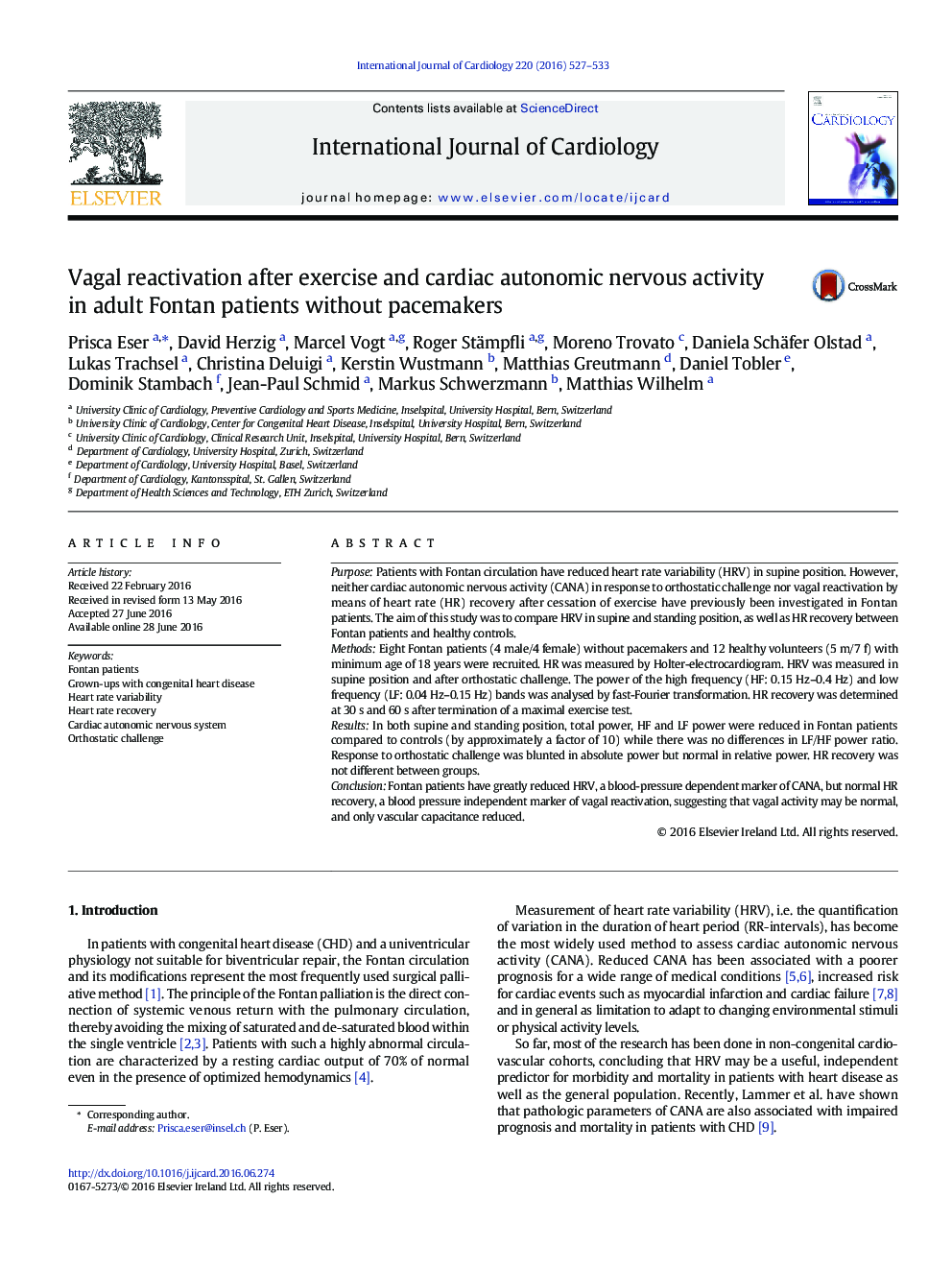| Article ID | Journal | Published Year | Pages | File Type |
|---|---|---|---|---|
| 5963571 | International Journal of Cardiology | 2016 | 7 Pages |
PurposePatients with Fontan circulation have reduced heart rate variability (HRV) in supine position. However, neither cardiac autonomic nervous activity (CANA) in response to orthostatic challenge nor vagal reactivation by means of heart rate (HR) recovery after cessation of exercise have previously been investigated in Fontan patients. The aim of this study was to compare HRV in supine and standing position, as well as HR recovery between Fontan patients and healthy controls.MethodsEight Fontan patients (4 male/4 female) without pacemakers and 12 healthy volunteers (5Â m/7Â f) with minimum age of 18Â years were recruited. HR was measured by Holter-electrocardiogram. HRV was measured in supine position and after orthostatic challenge. The power of the high frequency (HF: 0.15Â Hz-0.4Â Hz) and low frequency (LF: 0.04Â Hz-0.15Â Hz) bands was analysed by fast-Fourier transformation. HR recovery was determined at 30Â s and 60Â s after termination of a maximal exercise test.ResultsIn both supine and standing position, total power, HF and LF power were reduced in Fontan patients compared to controls (by approximately a factor of 10) while there was no differences in LF/HF power ratio. Response to orthostatic challenge was blunted in absolute power but normal in relative power. HR recovery was not different between groups.ConclusionFontan patients have greatly reduced HRV, a blood-pressure dependent marker of CANA, but normal HR recovery, a blood pressure independent marker of vagal reactivation, suggesting that vagal activity may be normal, and only vascular capacitance reduced.
